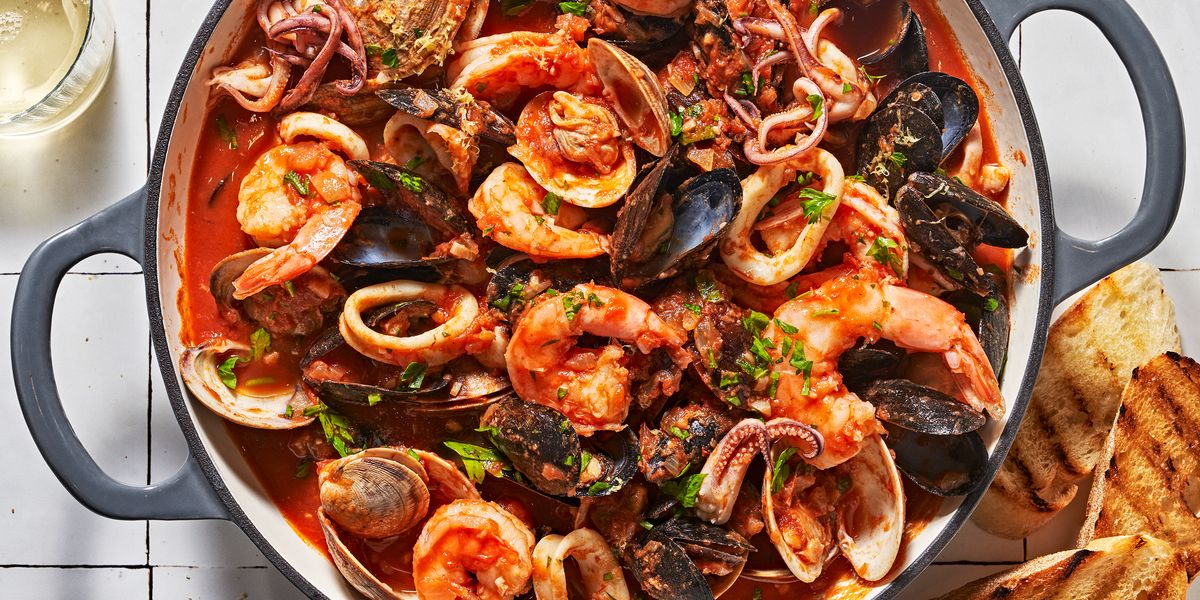
If you want to feel like you’re feasting on the Adriatic coast, then you’ve got to make this zuppa di pesce recipe. A staple dish for any traditional Italian-American
feast of the seven fishes, this stewy seafood dish is as beautiful as it is comforting. For our staple version, we went heavy on the mussels with the addition of clams, colossal (or jumbo if you can’t find) shrimp, and cuttlefish; remember, this is where calamari rings come from. If you’re looking for a shellfish extravaganza to impress family traveling from afar, then boil up a pot of linguine and toast some crostini for one of the best-ever seafood-driven dinners.
What is zuppa di pesce?
The list of brothy, tomatoey, fish-forward recipes can go on, but zuppa di pesce has a heavier balance of tomato products (puree, sauce, crushed tomatoes) than broth and might be recognized with its plethora of shellfish slathered over pasta at any Italian-American establishment. Some may refer to zuppa di pesce as a cioppino depending on where you are on the coast of Italy. They’re both considered fish soups; however, cioppino is said to originate in San Francisco. It’s brothier, more suitable for “soup” appetites, contains a mixture of shellfish and white fish, and is eaten with crusty bread.
Another brothy, fishy soup, bouillabaisse, is a French soup that’s light on the tomato and leans more into the broth. This also contains similar shellfish and flaky white fish, but may also have vegetables, like fennel or potato, and some powerful saffron or citrus.
Storing and cleaning fish:
– Always buy mussels and clams fresh. Once home, they can be rinsed under cold water and stored in a bowl in the refrigerator. You should also debeard your mussels of the tiny strings attached to their interior shell. You can do this with a tiny tug.
– Mussels and clams need a good interior cleaning before cooking. You can place clams in a solution of cold water and salt, which will help draw out sand impurities. If the shells are broken, toss them out. Although it might be hard to tell when you’ve got a bad mussel on your hands, make sure to use your nose to smell out any rotten ones. Sometimes mussels will secrete black silt, which is the result of their lack of thorough digestion.
– Buy shrimp fresh or frozen and always devein. Leaving the shell on will give the stew a little more flavor but will be more annoying to eat. It’s up to you to decide!
– Squid or cuttlefish are interchangeable. Squid are longer, and cuttlefish a little more squat. When buying fresh or frozen, make sure to remove the “beaks” and interior cartilage, which looks like clear plastic.
Storage:
You should cook this recipe with the expectation to finish it all. Keeping this in the refrigerator for any longer than a day isn’t recommended.
Did you try making this? Let us know how it went in the comments!
If you want to feel like you’re feasting on the Adriatic coast, then you’ve got to make this zuppa di pesce recipe. A staple dish for any traditional Italian-American
feast of the seven fishes, this stewy seafood dish is as beautiful as it is comforting. For our staple version, we went heavy on the mussels with the addition of clams, colossal (or jumbo if you can’t find) shrimp, and cuttlefish; remember, this is where calamari rings come from. If you’re looking for a shellfish extravaganza to impress family traveling from afar, then boil up a pot of linguine and toast some crostini for one of the best-ever seafood-driven dinners.
What is zuppa di pesce?
The list of brothy, tomatoey, fish-forward recipes can go on, but zuppa di pesce has a heavier balance of tomato products (puree, sauce, crushed tomatoes) than broth and might be recognized with its plethora of shellfish slathered over pasta at any Italian-American establishment. Some may refer to zuppa di pesce as a cioppino depending on where you are on the coast of Italy. They’re both considered fish soups; however, cioppino is said to originate in San Francisco. It’s brothier, more suitable for “soup” appetites, contains a mixture of shellfish and white fish, and is eaten with crusty bread.
Another brothy, fishy soup, bouillabaisse, is a French soup that’s light on the tomato and leans more into the broth. This also contains similar shellfish and flaky white fish, but may also have vegetables, like fennel or potato, and some powerful saffron or citrus.
Storing and cleaning fish:
– Always buy mussels and clams fresh. Once home, they can be rinsed under cold water and stored in a bowl in the refrigerator. You should also debeard your mussels of the tiny strings attached to their interior shell. You can do this with a tiny tug.
– Mussels and clams need a good interior cleaning before cooking. You can place clams in a solution of cold water and salt, which will help draw out sand impurities. If the shells are broken, toss them out. Although it might be hard to tell when you’ve got a bad mussel on your hands, make sure to use your nose to smell out any rotten ones. Sometimes mussels will secrete black silt, which is the result of their lack of thorough digestion.
– Buy shrimp fresh or frozen and always devein. Leaving the shell on will give the stew a little more flavor but will be more annoying to eat. It’s up to you to decide!
– Squid or cuttlefish are interchangeable. Squid are longer, and cuttlefish a little more squat. When buying fresh or frozen, make sure to remove the “beaks” and interior cartilage, which looks like clear plastic.
Storage:
You should cook this recipe with the expectation to finish it all. Keeping this in the refrigerator for any longer than a day isn’t recommended.
Did you try making this? Let us know how it went in the comments!
Directions
-
- Step 1
In a large 12″ skillet over medium-high heat, heat 3 tablespoons oil. Cook shrimp, turning once, until pink and just cooked through, about 2 minutes per side; season with 1/4 teaspoon salt. Transfer shrimp and any accumulated juices to a plate.
- Step 2In same skillet over medium-high heat, heat 3 tablespoons oil. Cook onion and anchovies, stirring often, until onions are lightly golden brown and softened, about 7 minutes. Add garlic and cook, stirring, until fragrant, about 1 minute. Using the back of a spoon, smash anchovies into onion mixture until mostly dissolved; season with 1/2 teaspoon salt and 1/2 teaspoon pepper.
- Step 3Reduce heat to medium. Add wine and bring to a simmer. Cook, stirring, until slightly reduced, about 1 minute. Add mussels and clams; season with 1/2 teaspoon salt. Cover and cook 5 minutes. Add crushed tomatoes and tomato puree; season with remaining 1/2 teaspoon salt and 1/4 teaspoon pepper. Bring to a simmer, then reduce heat to low. Cover and cook until shellfish begins to open, about 10 minutes; discard any shellfish that do not open.
- Step 4Add squid and cook, stirring, until lightly golden brown and cooked through, 1 to 2 minutes. Add shrimp and any accumulated juices, lemon zest, and parsley and toss until warmed through.
- Step 1
Related: Cioppino


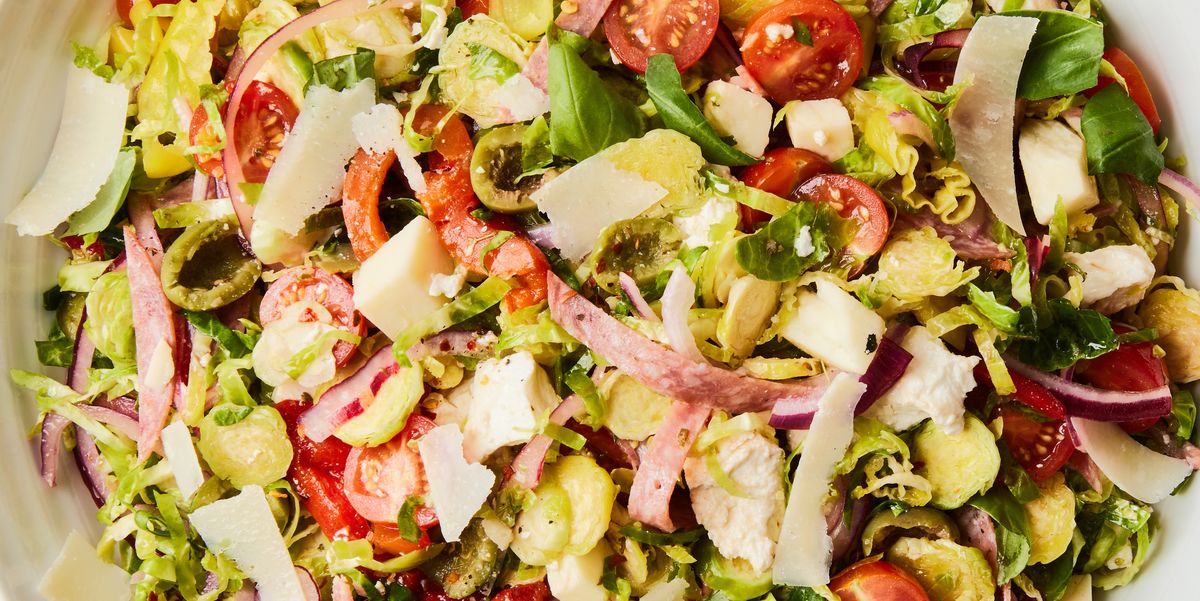

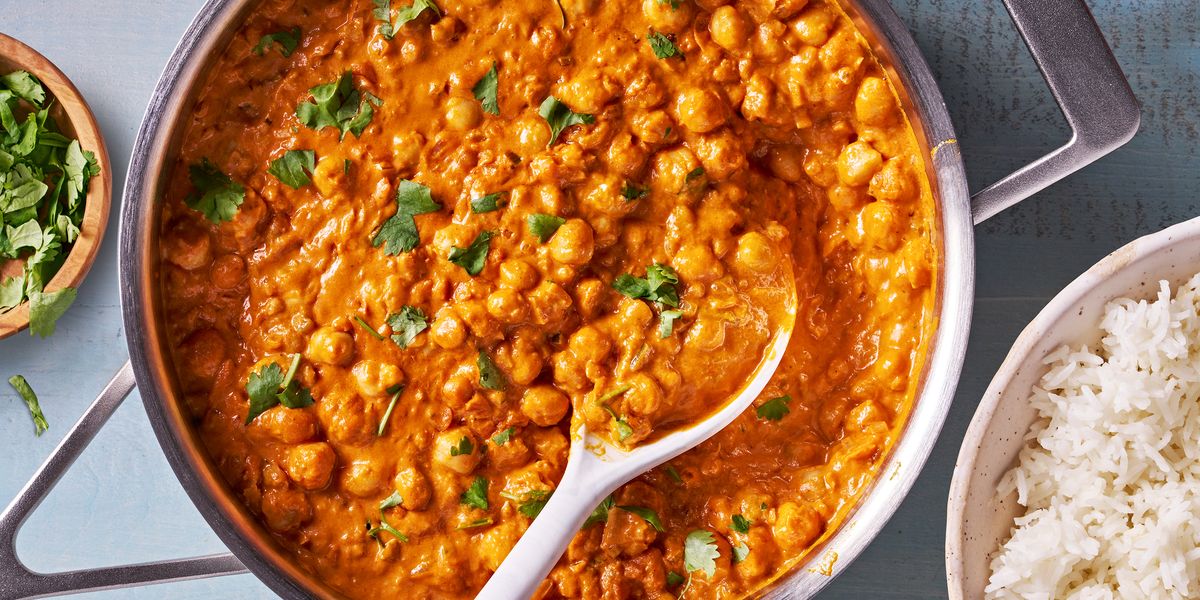
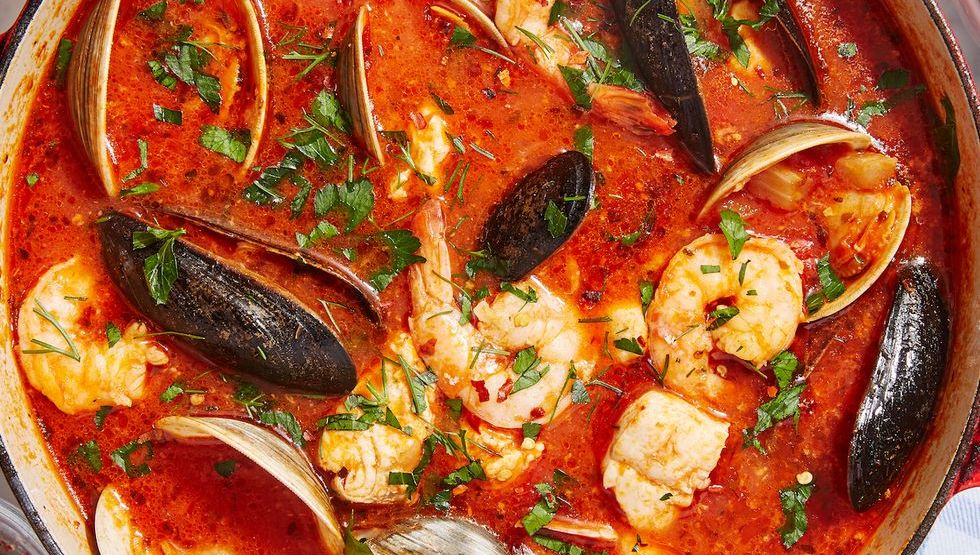
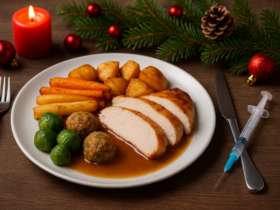






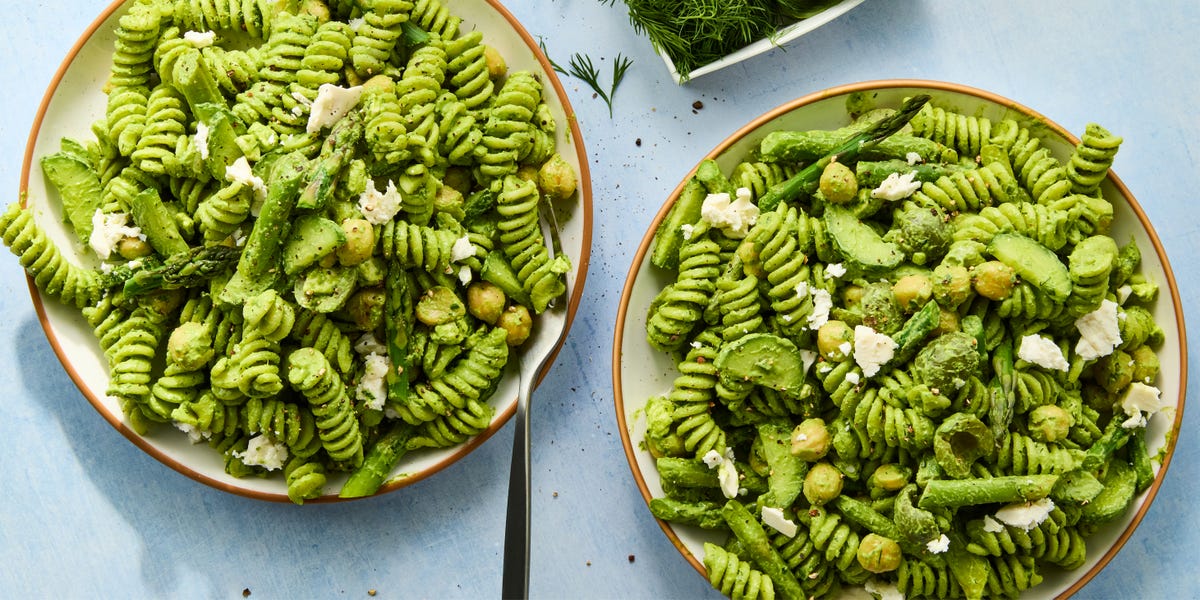


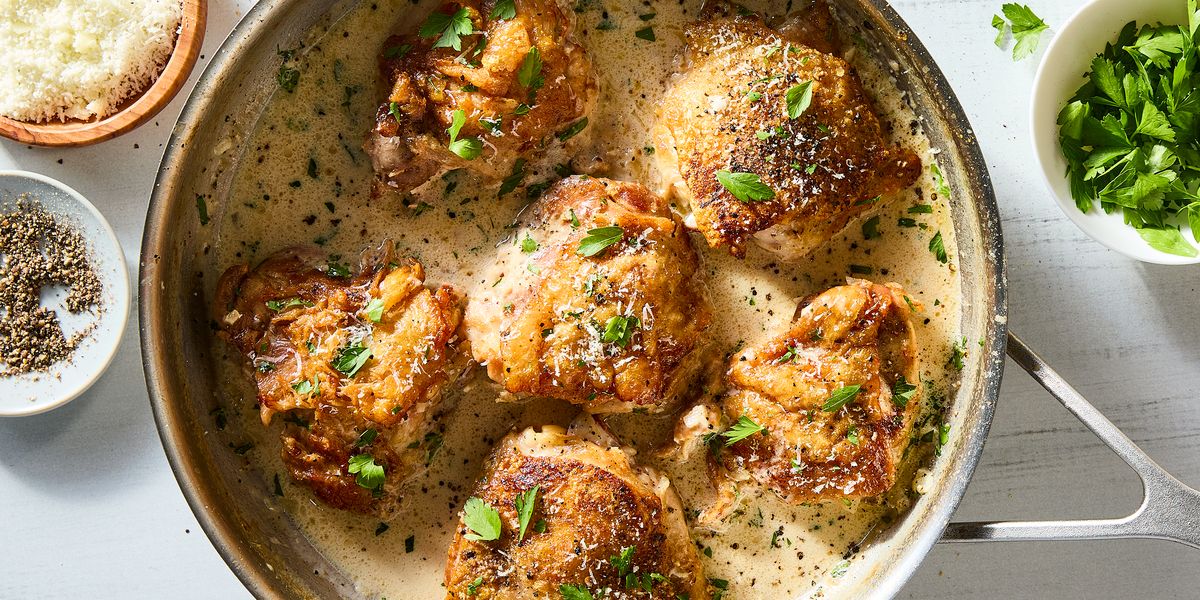

Leave a Reply